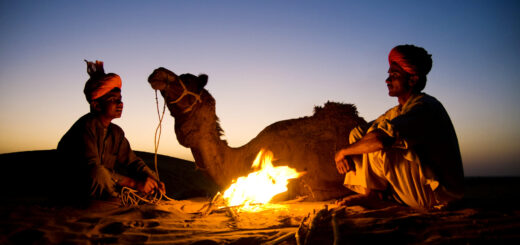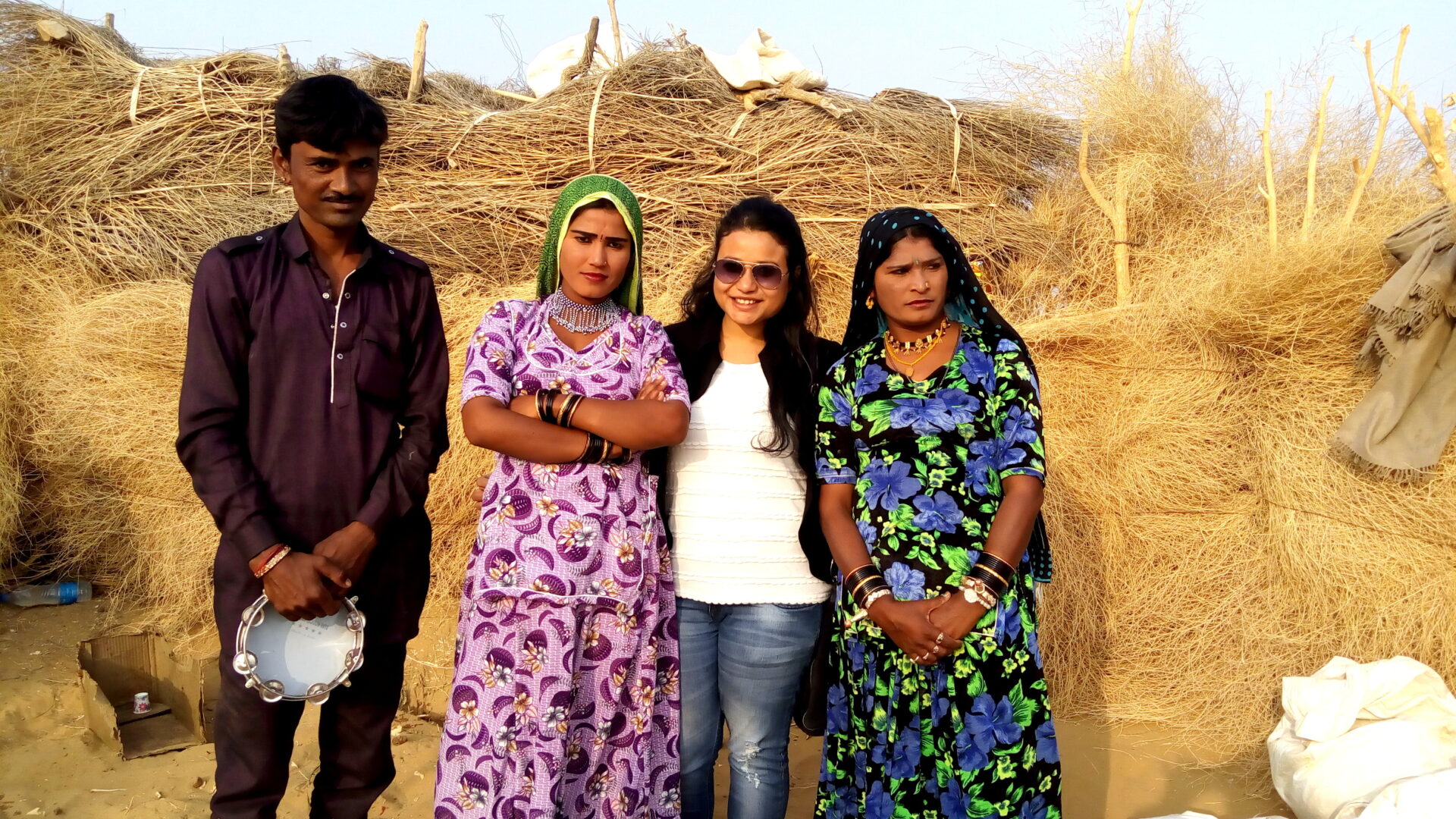Jodhpur – Travel Guide to India’s Blue City
Tucked in the narrow lanes of Old Jodhpur, the indigo-coloured houses have attracted millions to the city. Popularized as “The Blue City,” the alleys of the old town envelop stories passed on through the generations. From bustling bazaars to opulent palaces to majestic forts, the lore of royalty exists peacefully with modern footprints. Jodhpur, the erstwhile capital of the once mighty Marwar kingdom, transports you into the splendour of old-world charm. This Jodhpur travel guide unveils the hidden nuances of the city.
Pin the post to plan your trip to Jodhpur
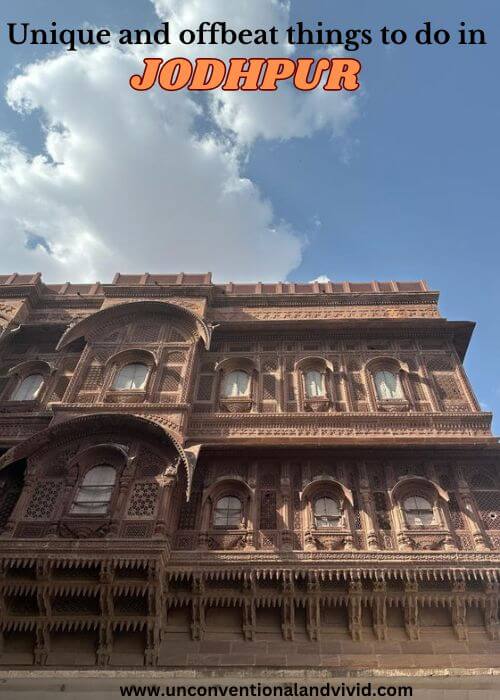
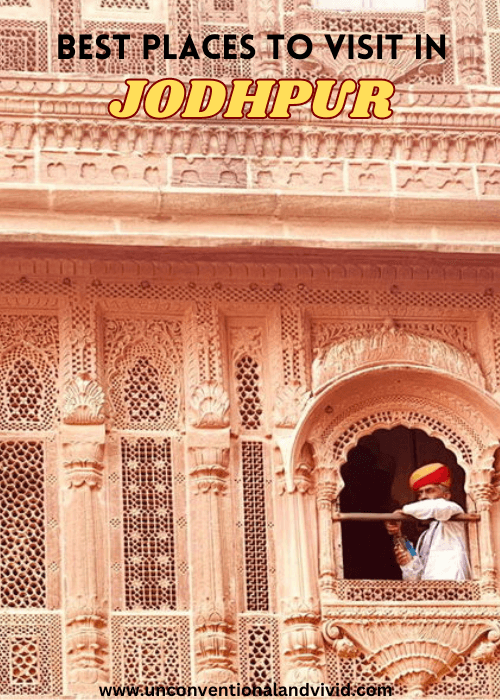
The city of Jodhpur bask in the glory of its rich history and its beguiling architecture. Whether it’s the engineering marvels of Mehrangarh Fort or the aristocracy of Umaid Bhawan, every corner screams of royalty triumphing through the modern era. Let’s take you on a riveting journey through the forgotten lanes beyond the best places to visit in Jodhpur.
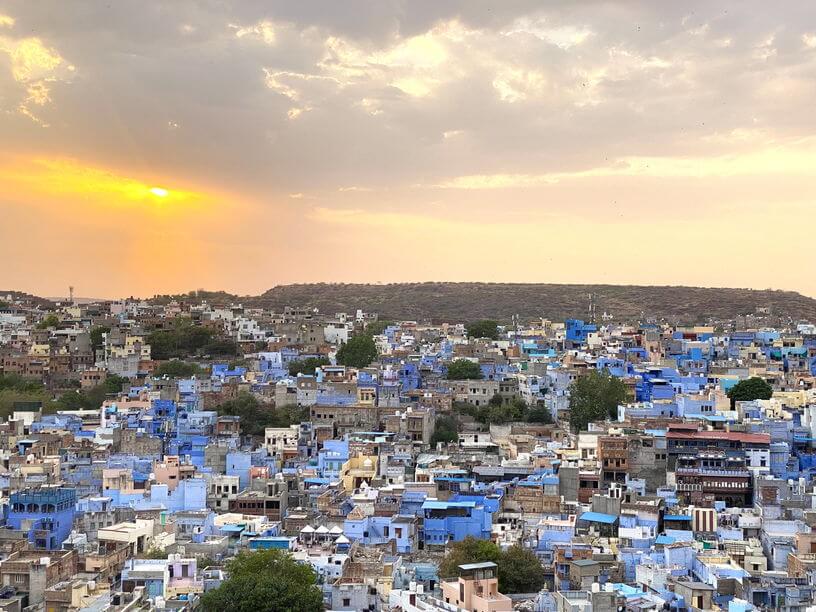
Table of Contents
Where in Jodhpur and tryst with its history?
Before skimming the chapters, let’s chart out the city’s whereabouts. Jodhpur is located in Rajasthan and is well-connected via train and bus. Known as the blue city, it is known for its indigo-blue-coloured houses. The bustling city is surrounded by deserts and overlooked by the magnificent Mehrangarh palace. Jodhpur was founded in the 15th century by Rao Jodha of the Rathore clan, who was also the ruler of Mandore. The illustrious royal history of the city continues to be reflected through its palaces, architecture, and the old town’s bazaars.
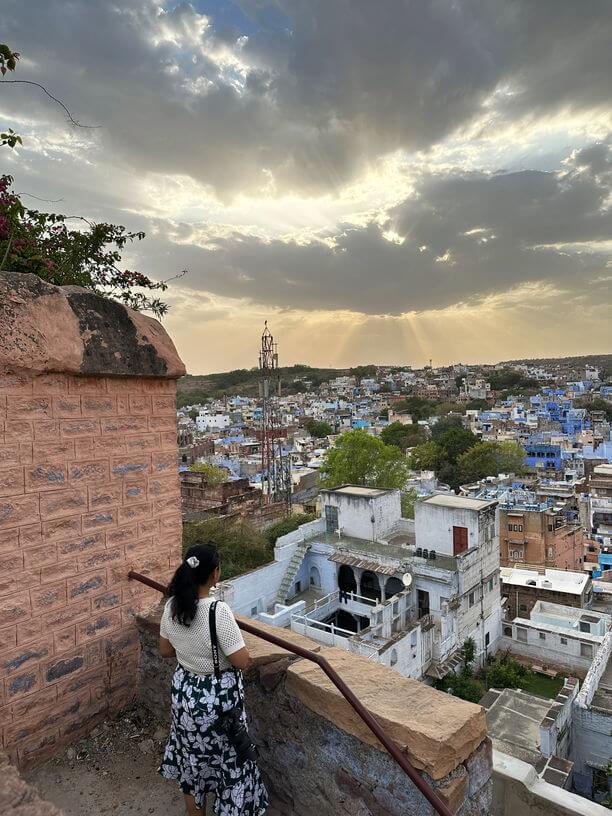
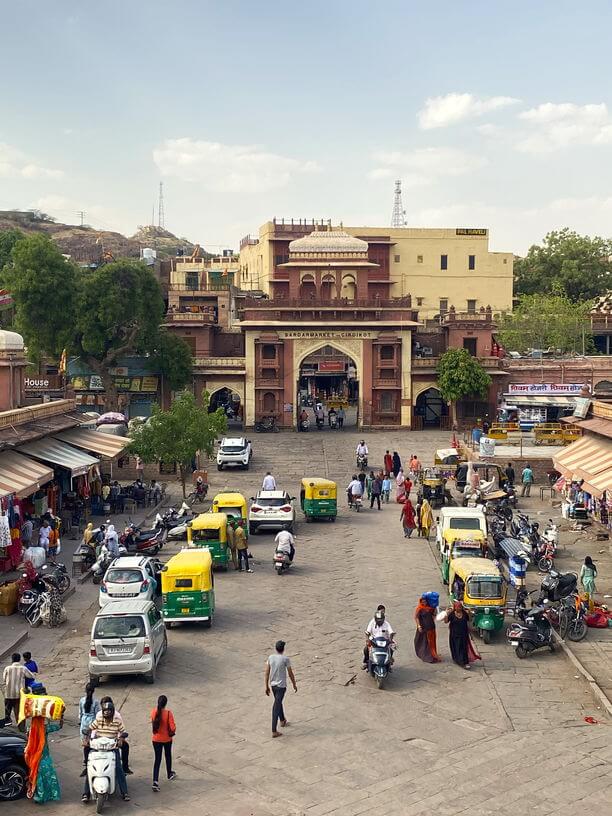
Do Not Miss These Travel Experiences in Jodhpur
The curated 3-day Jodhpur travel itinerary is perfect for first-timers. Beyond the magnificent architecture, the city is buried in stories from medieval times. Since time immemorial, different communities have co-existed, bringing forward the finery of excellent craftsmanship. The lanes of old Jodhpur are home to many artisans, as are the villages surrounding the city. Here’s what you can look forward to explore and experience.

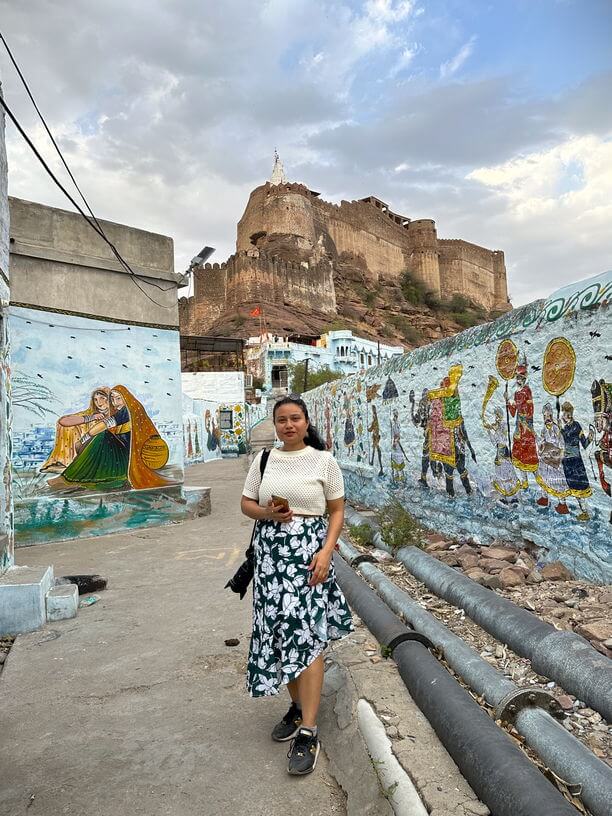
Story Behind the Blue Houses of Jodhpur
The blue houses of Jodhpur have always intrigued me, but the story behind them amplifies my interest. As much as the clustered blue walls and roofs evoke a sensory experience, they have a fascinating story behind them of cultural symbolism and identity. As we walked through the narrow lanes, our guide told us that the blue houses are also known as “Brahmin House.” In ancient times, the Brahmin community painted their houses blue to show their superior status and differentiate from the other castes.
Walking through the clustered houses in old Jodhpur, you will find numerous newly painted blue houses to attract tourists. However, there is a stark difference between the houses that were painted initially and the freshly painted ones. The limestone mix with eco-friendly and natural indigo dye gives the original blue-painted homes a dull, faded look. The newly painted homes are bright and vivid.
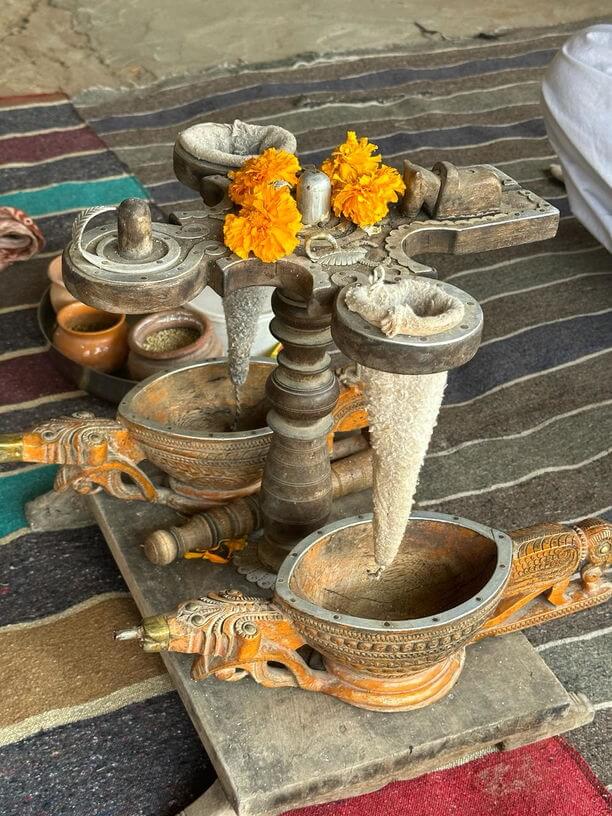
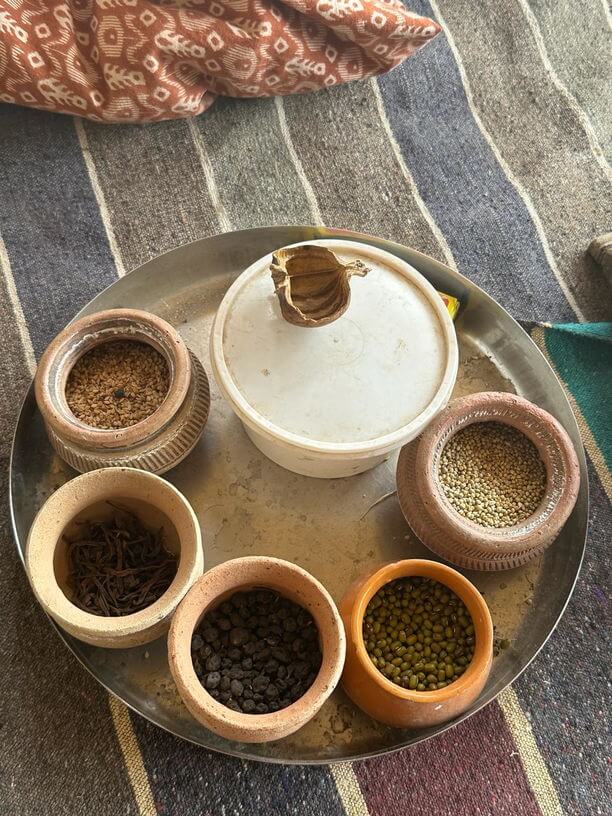
Amal Sabha – Opium Ceremony of Bishnoi Community
Your Jodhpur is only complete with a trip to the Bishnoi rural villages. The traditional opium ceremony, also known as Amal Sabha, has been practised amongst the Bishnoi community for thousands of years. Only male members are allowed to participate, and the purpose is to celebrate brotherhood and camaraderie. Filtered opiate water is first offered to Lord Shiva, followed by family members and guests. The eldest member of the group makes filtered opium water using a traditional wooden set-up known as Kharadh. Once the opium water is prepared, visitors sip the water from the palm of the eldest member in the ceremonial gathering. Add this to your Jodhpur travel itinerary for a unique experience.
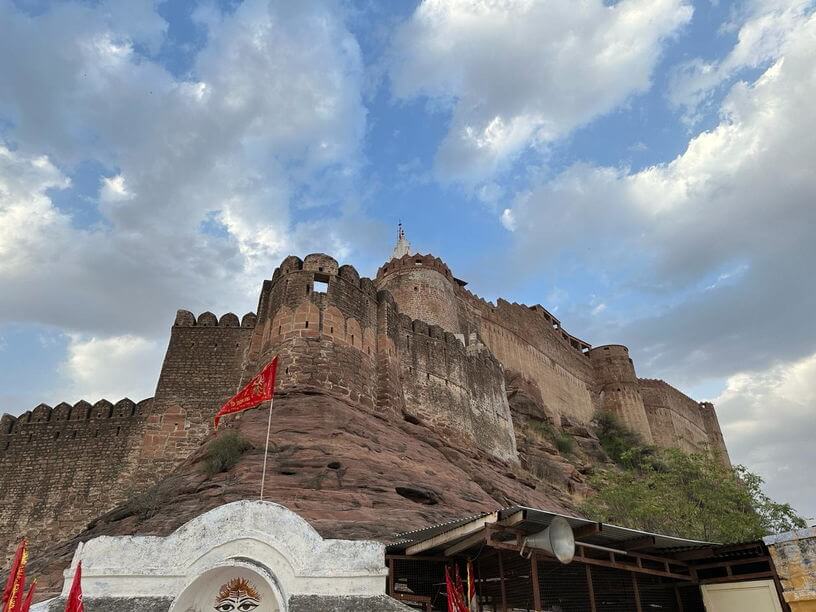
Mehrangarh Fort – Juxtaposition of Past and Present
The splendour of ancient royalty continues to grace the mighty Mehrangarh Fort. The rugged fort atop a hill was built in 1459 by the erstwhile king and founder of Jodhpur, Rao Jodha. Overlooking the blue houses of Jodhpur, the citadel is a portal connecting the past opulence of the Marwar Kingdom to the present-day thriving tourism. The sandstone fort with ornate carvings, stunning murals, and elaborate arches echoes the excellence of past craftsmanship. Built on a rocky cliff with high walls soaring over 30 meters, the decadence continues to reign.
As you walk in absolute awe, don’t miss out on some stunning rooms.
- Phool Mahal (The Palace of Flowers) – The ceilings and walls are adorned with gold filigree work. Rich and colourful mirrorwork decorates the place, from alcoves to the ceilings to the arches. The stained window glasses add to the decadence. One of the palace’s grandest rooms, it is a must-visit during your trip to Mehrangarh Fort.
- Sheesh Mahal (Palace of Mirrors) – As the name says, the patterned mirror work on the ceiling and walls is a true architectural triumph. The gesso panels on the walls depict pictures of God and Goddess.
- Mehrangarh Museum – The museum gallery is a window that takes you back in time with displays from Royal times. Howdah Gallery displays timeless and unique handcrafted elephant seats used by emperors and kings. Another exciting gallery is the Palanquin Gallery, which displays luxuriously handcrafted palanquins made of wood or metal and engraved with precious metals. Royal queens commonly used these during the Purdah system. Apart from that, stroll through the galleries displaying the finest textiles, arms, paintings, decorative art, decor, etc.
If you are planning a Jodhpur and Jaisalmer trip together, you can further read this detailed travel itinerary for Jaisalmer.
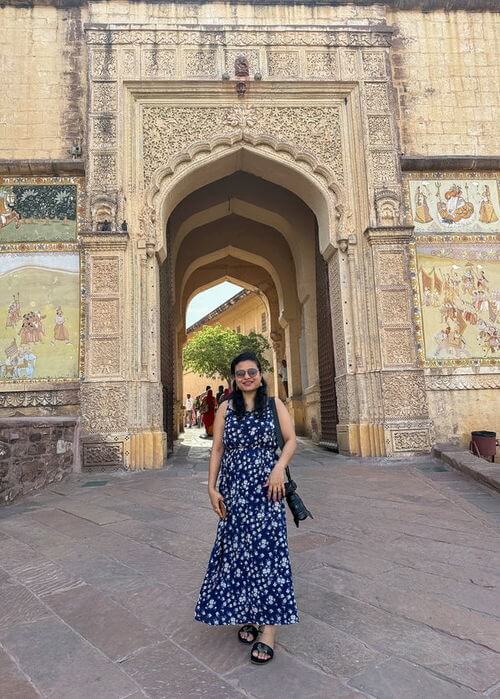
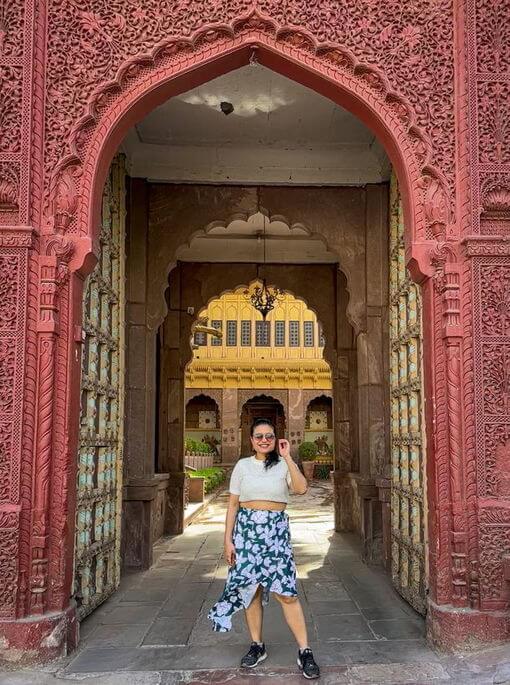
Umaid Bhawan – Youngest Palace with a Nobel Story
While Umaid Bhawan is now known for lavish and big fat weddings, the youngest palace was built to employ locals. Maharaja Umaid Singh of Marwar-Rathore commissioned the 20th century and last of the Rajput palaces to provide employment and rescue the people of Jodhpur from famine. Interiors reflect a mix of Saracenic and Western Art Deco. The Makrana Marble used indoors keeps the glorious shine intact. Part museum and part extravagant hotel, it is spread across acres of land surrounded by a bounty of nature. The museum beautifully preserves the glory of the past with vintage cars, murals, trophies, antiques, etc.
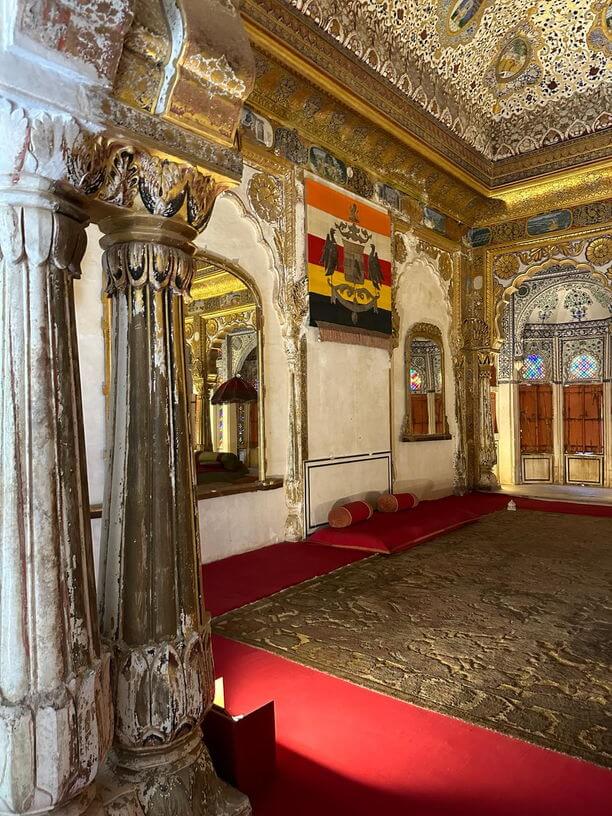
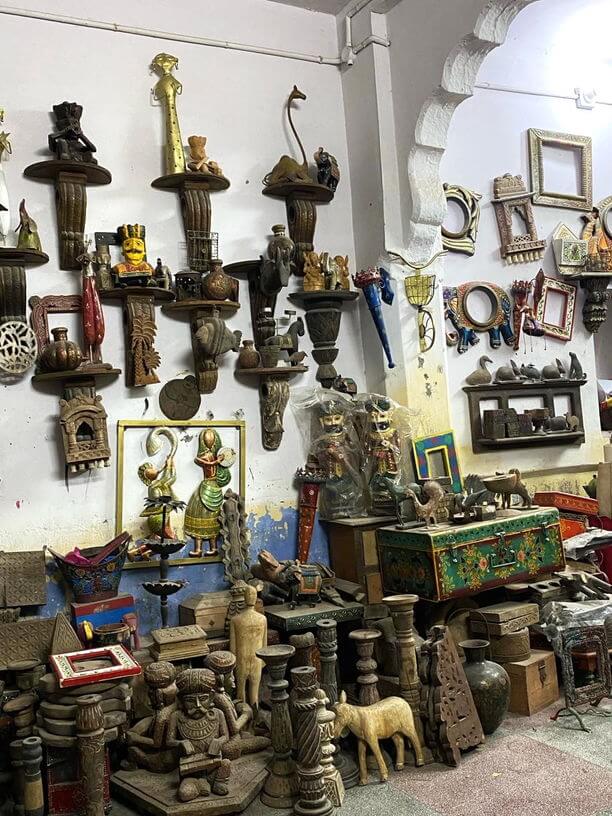
Through the Bohemian Bazaars of Jodhpur
The bustling bazaar finds a mention in doing things in Jodhpur. Shopping is a delight whether you are a connoisseur of handicrafts, footwear, or everything Bohemian. Not only are the markets of Jodhpur teeming with vibrant artefacts and clothes, but they are surprisingly affordable. Here is the list of the best markets in Jodhpur to explore:
- Tripolia Bazaar – Modern-day vibrancy meets old-school aesthetic in Jodhpur’s Tripolia Bazaar. It’s a shopper’s paradise, from handcrafted brass items to wooden handicrafts to traditional Jodhpur apparel with intricate embroideries.
- Sardar Bazaar – Located close to the iconic clock tower, it’s an excellent market to shop for spices, textiles, handicrafts, and footwear.
- Mochi Market – It’s one of the go to market for shopping vivid and vibrant Jodhpuri Jutis. Shop for traditional footwear with intricate embroidery, lac bangles, tie-dye textiles, leather souvenirs etc.
- Nai Sarak – It’s popularly known for traditional textiles, dyed fabrics, and handcrafted fabrics. Shop for Bandhani textiles that reflect rich history of Rajasthan.
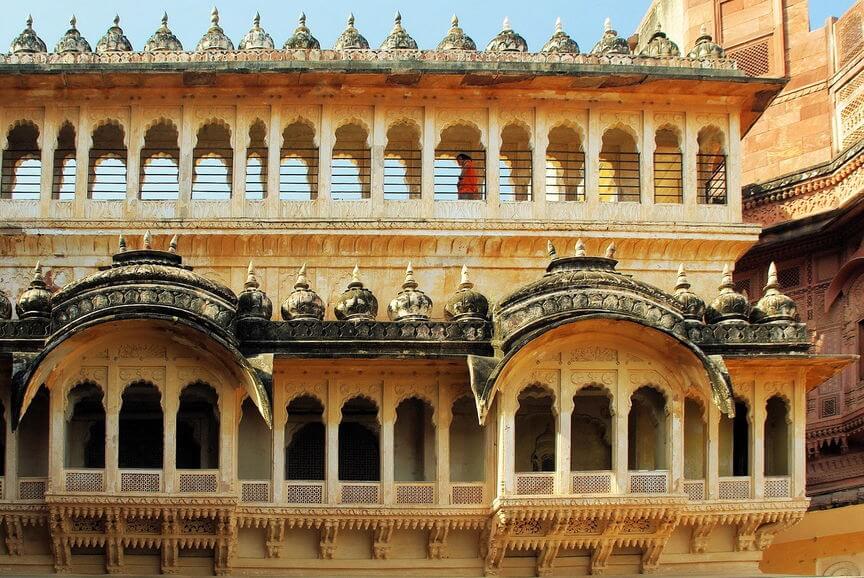
Also, planning an offbeat destination in Jaisalmer. Ditch the super touristic Sam Sand Dunes and plan a trip to Khuri Desert.
Book a tour in Jodhpur
Other Things to Do in Jodhpur
- Go for Bishnoi Village Safari; you might even spot the famous Black Bucks. A day trip to Bishnoi Village from Jodhpur can be quickly wrapped up in a day, including Amal Sabha (Opium ceremony).
- Take Instaworthy pictures at Toorji-ka-Jhalra (Jodhpur step well). You can have a vibrant evening around the stepwell and enjoy live performances and bands singing. Also, don’t be surprised if you find adventurous souls jumping into the well for a swim.
- Enjoy a short hike across Rao Jodha Desert Rock Park. However, make sure to start early to escape the scorching heat.
- If you love meat, you cannot miss trying Laal Maas. The best places to eat Laal Maas in Jodhpur include Indique Restaurant and Gopal Roof Top Restaurant.
- Take a blue city tour to learn about the history of the place. Walk about the narrow lanes and shop at small antique shops to buy affordable, handcrafted souvenirs.
- Try the delicious Makhani Lassi at Mishrilal Hotel, close to the clock tower. The flavours will blow your mind.
- To experience camping in the Thar Desert, visit the Osian villages to camp on the dunes. Witness a mesmerizing sunset, enjoy music, and don’t miss stargazing at night.
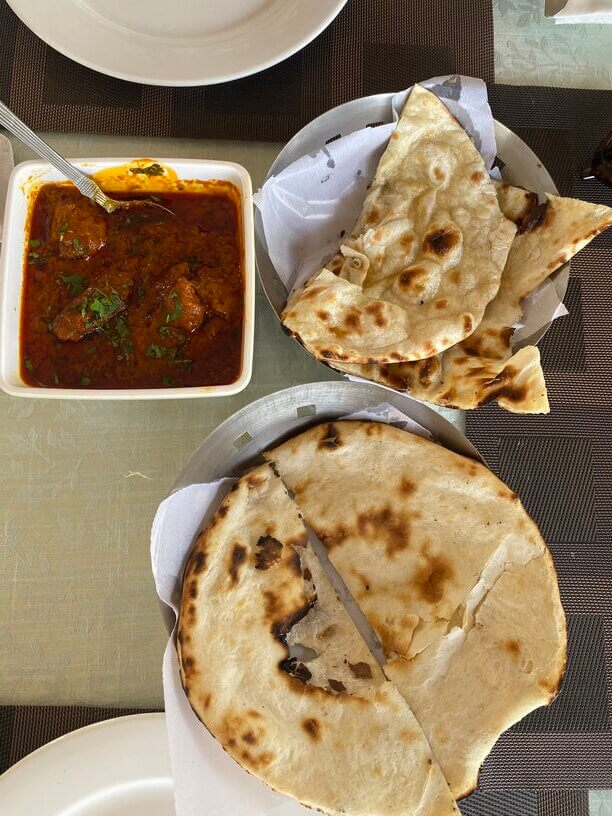
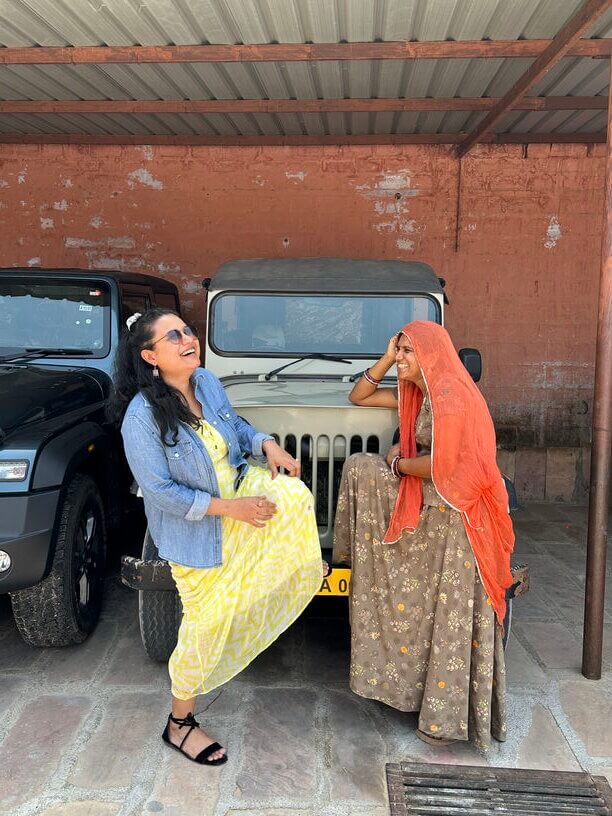
Where to Stay in Jodhpur?
Jodhpur is no short of a budget uber-luxurious stay option. With the flooding tourism in the city, there is a resort, homestay, hotel, or boutique stay in every corner. If you are looking for a mid-range boutique stay that preserves the luxury of the once-royal kingdom with its traditional architecture and décor, you can book a stay at The Arch Boutique Homestay. Also, it’s adjacent to Toorji Ka Jhalra stepwell.
How to reach Jodhpur?
Jodhpur is well-connected to major cities with various forms of connectivity. I travelled to Jodhpur from New Delhi, and it was convenient with an overnight train.
- Jodhpur is connected to New Delhi and Mumbai with direct flights. However, the best way to commute to other cities is via trains.
- Travelling to Jodhpur via train is one of the most convenient and affordable ways. Many direct trains connect Jodhpur from numerous cities like Delhi, Mumbai, Chennai, Kolkata etc.
- Also, Jodhpur can be travelled on a road trip. The city can be reached via road with a convenient distance from Jodhpur to Jaisalmer or other cities.

